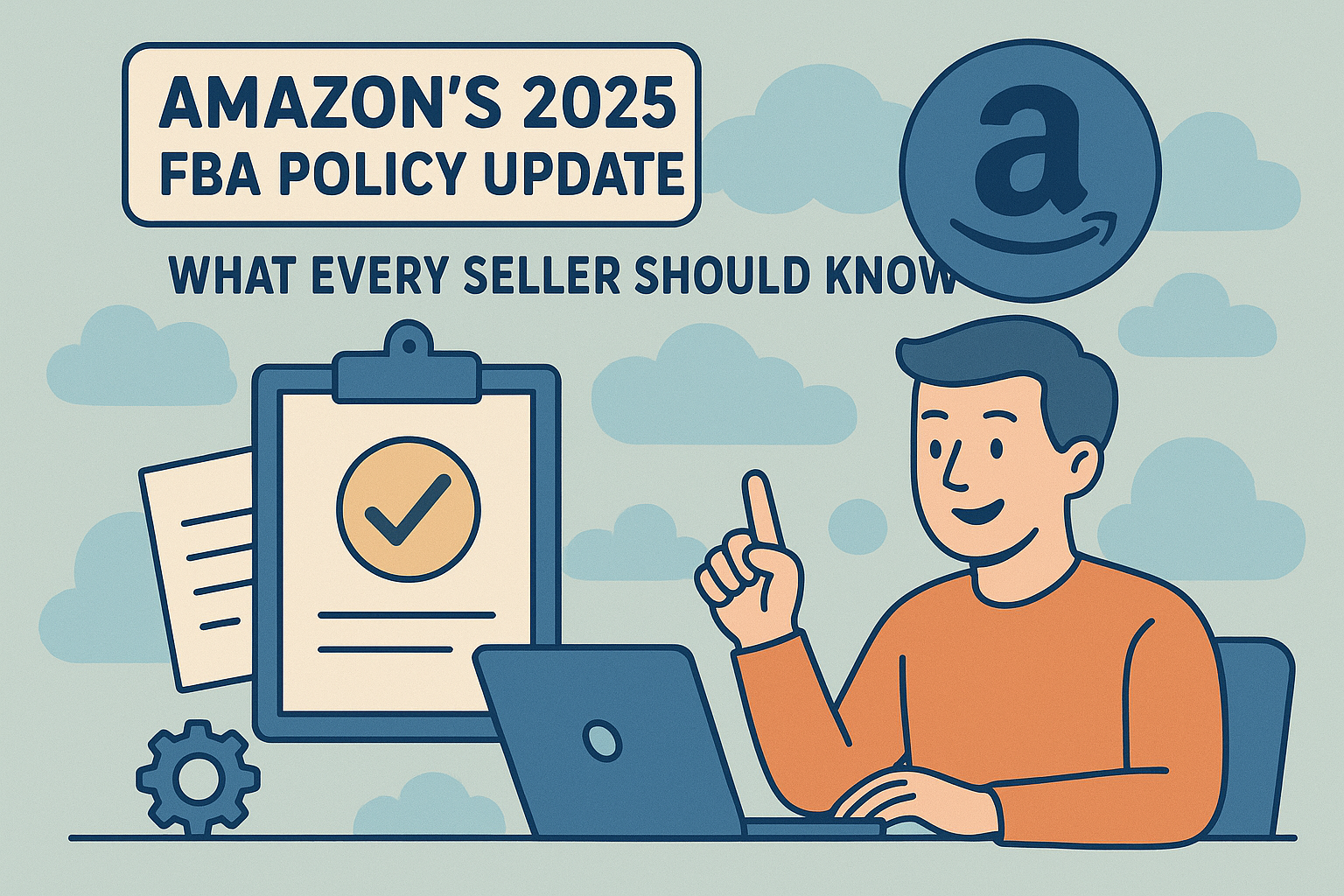Address
304 North Cardinal St.
Dorchester Center, MA 02124
Work Hours
Monday to Friday: 7AM - 7PM
Weekend: 10AM - 5PM

In the volatile e-commerce landscape, grasping the intricacies of Amazon’s FBA (Fulfillment by Amazon) policies is the key differentiator between success and stagnation. Heading into 2025, Amazon has significantly tightened its logistics control, reintroducing and reinforcing several inventory capacity and restock restrictions. These adjustments not only impact sellers’ warehousing costs but also pose a direct threat to the sales velocity and ranking of core SKUs.
This article offers an expert-level, in-depth analysis of the 2025 FBA policy updates and provides a set of battle-tested, practical strategies for effective navigation.
Policy Summary: Amazon has reactivated monthly FBA restock and capacity limits. Unlike previous, volume-based allocations, the 2025 restrictions are notably more dynamic and targeted. Many sellers report that individual ASIN limits are tied to that SKU’s historical sales velocity—often aligned with approximately 90 Days of Supply.
Expert Analysis: This shift signals that Amazon’s philosophy on warehouse resource management has reached a new peak of “Lean Operations.” The system no longer rewards sellers for merely holding inventory but rather for prioritizing fast turnover and efficiency. This forces a complete migration from a “stockpiling mindset” to a “velocity mindset.” Restock limits essentially become an internal bidding mechanism—capacity is allocated to SKUs that generate the quickest profit for Amazon.
Policy Summary: FBA storage capacity assignment remains tightly linked to the seller’s Inventory Performance Index (IPI) and its derived metrics. Amazon continues to dynamically adjust usable storage space monthly, factoring in historical sales, seasonality, and IPI performance.
Expert Analysis: IPI is not an abstract figure; it’s the real-time barometer of a seller’s capital efficiency. A low IPI signifies: excess inventory, high levels of slow-moving goods, and wasted FBA resources. If your IPI remains low, your capacity limits will be continuously compressed, leading to a vicious cycle: Low IPI Low Capacity High Stockout Risk Rank Drop Poor Sales Even Lower IPI.
Policy Summary: Sellers must rigorously monitor official fee schedules, paying particular attention to Peak-Season Surcharges (October through December). Furthermore, long-term storage fees and oversized inventory penalties remain in effect, with increasingly precise calculations.
Real-World Case Study: A home goods brand disregarded peak-season fee warnings in Q3. Consequently, their Cost of Fulfillment soared by in Q4. Although sales volume increased, their net profit margin actually dropped by
percentage points. Conclusion: Peak-season surcharges are no longer an “extra cost” but a normalized operational expense that must be factored into the product pricing and budgeting model.
If a best-selling SKU is constrained by restock caps and cannot be replenished promptly, it will inevitably lead to a stockout.
Under the new policy, Amazon is effectively forcing out slow-moving items by limiting the space they consume.
Capacity allocation during Prime Day and Q4 will be tighter and less predictable.
To navigate the 2025 FBA policies successfully, brands must immediately implement the following measures:
Common Mistake: Many sellers rely only on
-day average sales. Under dynamic capacity rules, this short-sightedness can mean capacity is exhausted just before the peak season, leaving no room to accommodate a needed
sales surge.
3PL Contingency: Establish an active partnership with a trusted Third-Party Logistics (3PL) provider.
Account-Specific Management: Amazon’s capacity limits are often Account-Specific. Sellers must check the Seller Central “Restock Limits” dashboard and official notifications daily.
The long-term strategy is to reduce SKU count and increase the competitiveness of core ASINs. Liquidate low-profit, long-tail SKUs that consume capacity, concentrating sourcing and marketing resources on “Hero SKUs.”
Build a unified operational dashboard that integrates Amazon API data (stock, sales, ads) with 3PL stock levels. Use tools to automate rules like: “IF FBA Stock < X, THEN Reduce PPC Budget by Y.”
Drive off-Amazon traffic (Social Media, Google Ads) and build customer email lists to develop a Brand DTC (Direct-to-Consumer) channel. This both diversifies traffic risk and ensures revenue can continue via proprietary channels even if FBA capacity bottlenecks occur.
The 2025 FBA policy environment favors sellers who forecast accurately, prioritize inventory velocity, and build fulfillment redundancy. Treat restock limits and capacity as non-negotiable business constraints—plan your SKU strategy, ad spend, and logistics around them, not in reaction to them. Efficiency is profit.
Need expert help? Talk to our Amazon operations team today to build a smarter FBA strategy.
© 2025 Shenzhen 1981 Technology Co., Ltd. All rights reserved.